Standing on a stretch of ancient cobblestone outside Rome, I couldn’t help but marvel at how these stones had witnessed the passage of countless feet across millennia. These weren’t just pathways—they were the arteries of an empire that forever changed the course of human civilization. The Roman road network, spanning over 400,000 kilometers with more than 80,500 kilometers of stone-paved routes, remains one of humanity’s greatest engineering achievements.
The Architectural Marvel of Roman Engineering
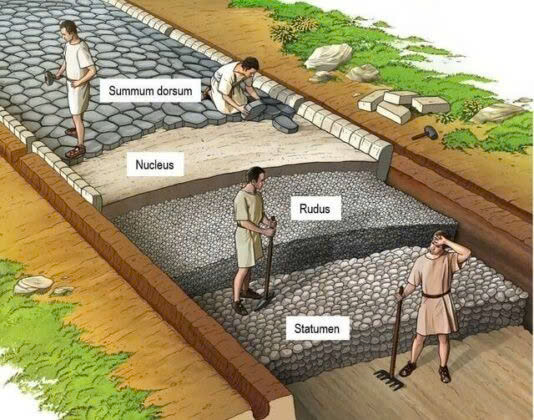
The brilliance of Roman road construction wasn’t just in its scale but in its adaptability. Roman engineers—often military men with expertise beyond warfare—approached each roadway as a unique challenge. There was no one-size-fits-all solution; instead, they carefully assessed the terrain, climate, and available materials to create pathways that would withstand centuries of use.
The Five-Layer Symphony
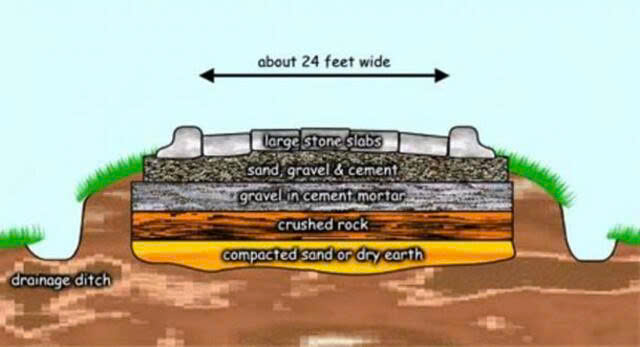
What made these roads so remarkably durable was their sophisticated layered construction:
- Foundation Soil (Pavimentum): Meticulously compacted earth, sometimes mixed with sand or mortar to prevent settling
- Statumen: A 25-60 cm layer of crushed rock that formed the road’s sturdy base
- Rudus: Approximately 20 cm of crushed rock bonded with cement mortar for additional stability
- Nucleus: The 30 cm core layer composed of concrete mixed with sand and gravel
- Summum Dorsum: The crown jewel—15 cm thick stone blocks precisely fitted to create a smooth yet durable surface
These weren’t simply flat pathways. Roman engineers incorporated gentle crowns in the center to facilitate drainage, built sophisticated curbing systems, and even included separate pathways for pedestrians. The thoughtfulness in design remains impressive even by today’s standards.
The Roads That Built an Empire
The Legendary Pathways
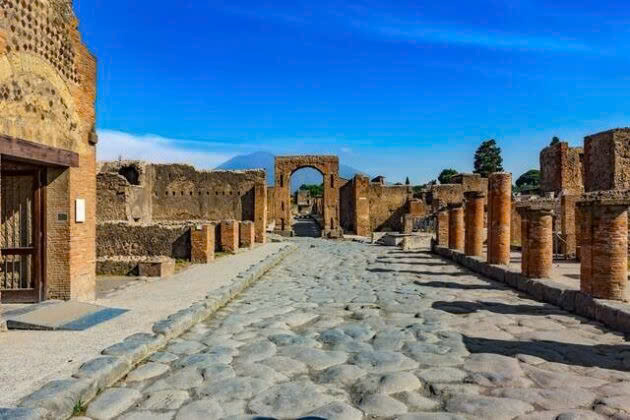
The Via Appia, affectionately called the “Queen of Roads,” stretched 261 kilometers from Rome to Tarentum (modern Taranto) and eventually extended to Brundisium (modern Brindisi). This iconic roadway became a symbol of Roman ingenuity and imperial ambition.
Other monumental routes—Via Popilia crossing Calabria, Via Aurelia, Via Flaminia, and Via Aemilia—radiated from Rome like spokes from a hub. This network gave birth to the famous saying “All roads lead to Rome,” reflecting how these pathways converged on the capital, cementing its position as the epicenter of the known world.
Military Backbone and Economic Catalyst
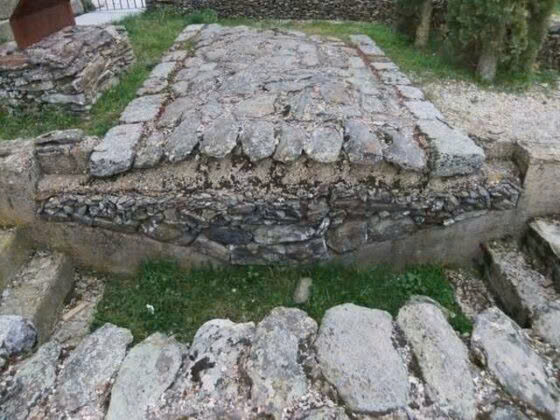
The strategic value of these roads transformed warfare and governance. Roman legions could respond rapidly to threats, secure borders, and maintain control over distant territories with unprecedented efficiency. Supply chains operated with remarkable reliability, ensuring the military machine remained well-provisioned even in remote outposts.
Yet perhaps more profound was the economic revolution these roads unleashed. Markets flourished as goods flowed freely across vast distances. Merchants traveled with greater safety and predictability. Farmers found new customers for their produce. Ideas and innovations spread rapidly, creating a shared cultural experience across disparate regions.
The Silent Teachers of Modernity
Though the empire eventually crumbled, its roads endured. Walking through European countryside today, you may find yourself treading the same path as Roman centurions did two millennia ago. Modern highways and railways often follow these ancient routes, a testament to the Romans’ skill in identifying the most efficient pathways through challenging landscapes.
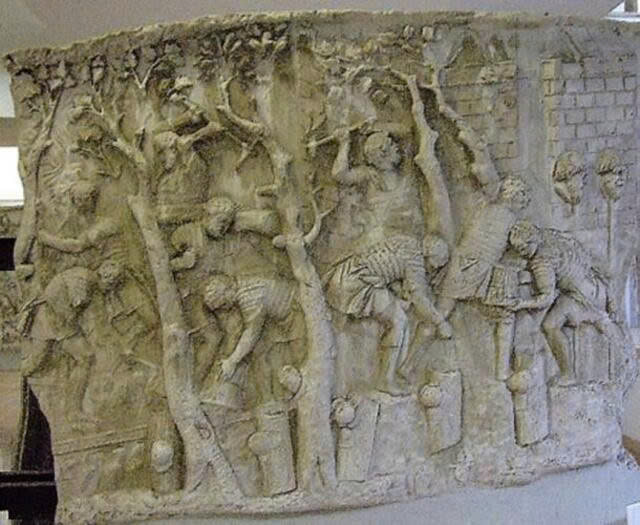
Archaeological remnants of these roads serve as open-air classrooms for modern engineers. The principles of durability, adaptability, and precision embodied in Roman road construction continue to influence contemporary infrastructure development. Their approach to drainage, material layering, and adapting to local conditions remains relevant in today’s construction practices.
Video
The Cultural Highway

Beyond their physical impact, Roman roads created something more profound—they were conduits of cultural exchange and identity formation. By connecting distant provinces to the heart of the empire, these pathways fostered a sense of belonging to something greater than local affiliations. Languages, religions, culinary traditions, and artistic styles blended along these routes, creating the foundations of what would eventually become European civilization.
The Road Ahead
As we face modern infrastructure challenges—sustainability concerns, rapidly growing urban centers, and the need for resilient transportation networks—the Roman approach to road building offers valuable insights. Their focus on durability over expedience, adaptation to local conditions, and integration of multiple functions into a single design reflects a holistic approach to infrastructure that we would do well to remember.

The next time you travel on a modern highway, consider that you’re experiencing the latest iteration of an idea perfected by engineers who worked thousands of years ago. The Romans didn’t just build roads—they created connections that transcended time, teaching us that well-designed infrastructure isn’t merely about moving from one place to another but about bringing people and ideas together across generations.

